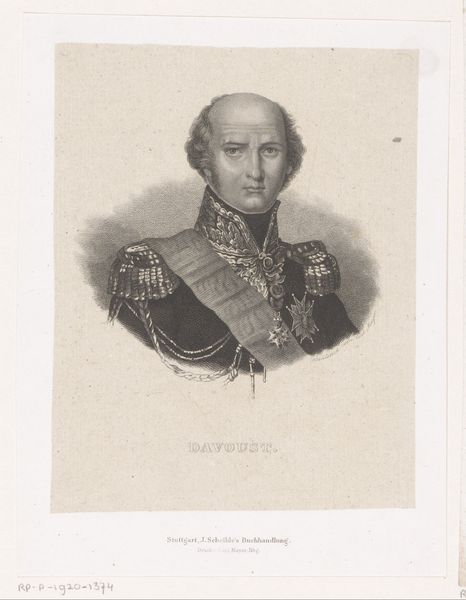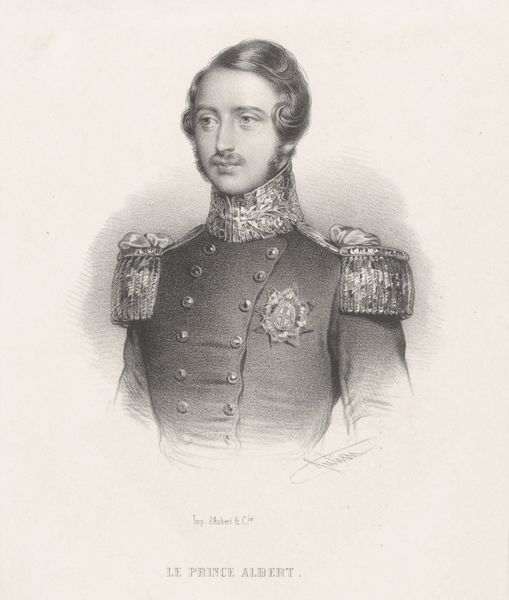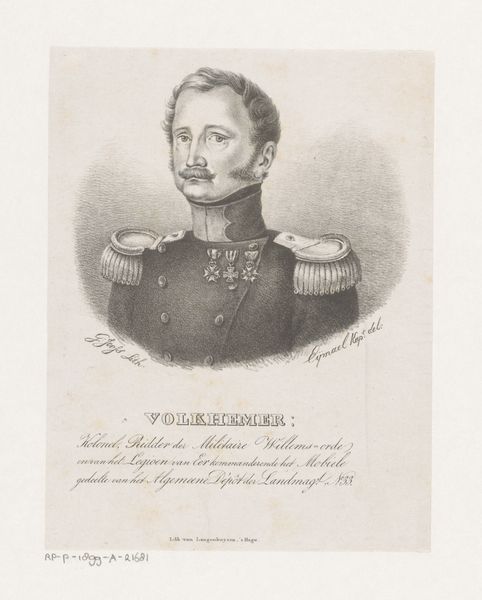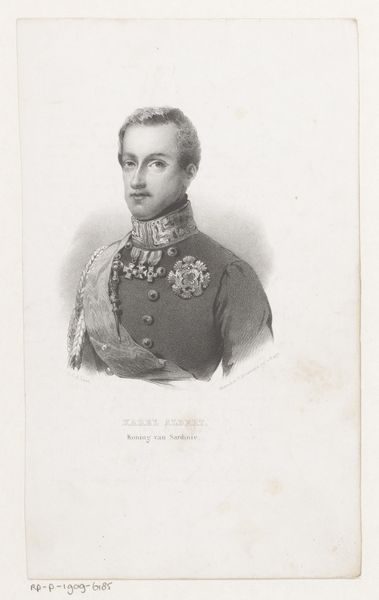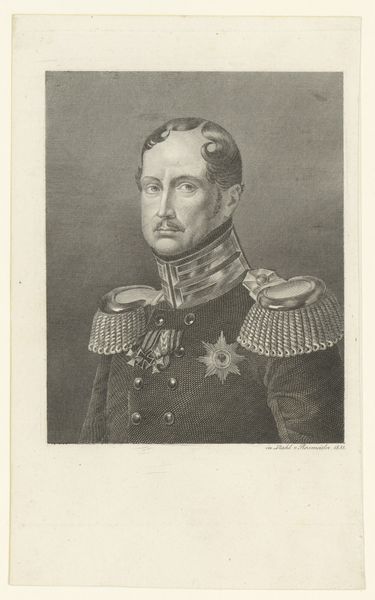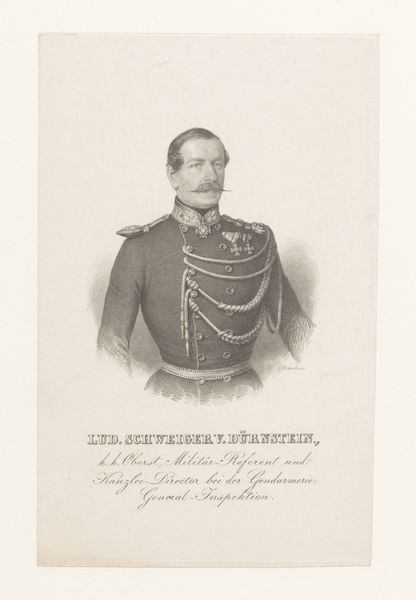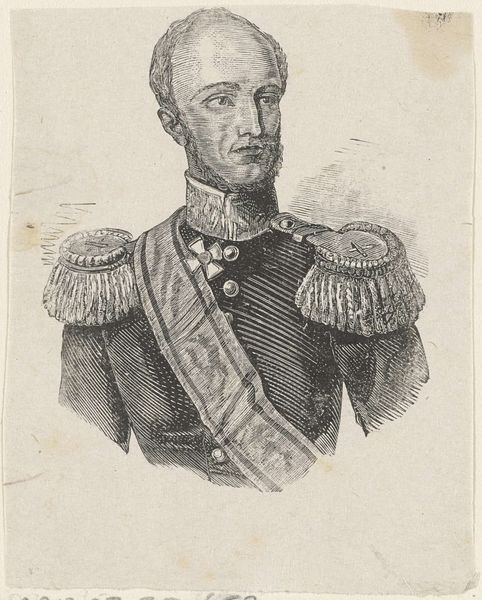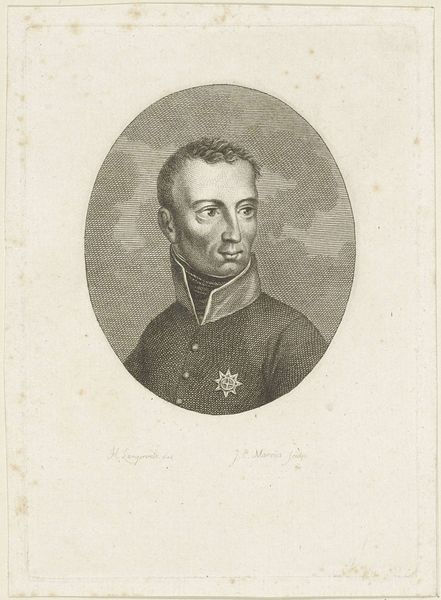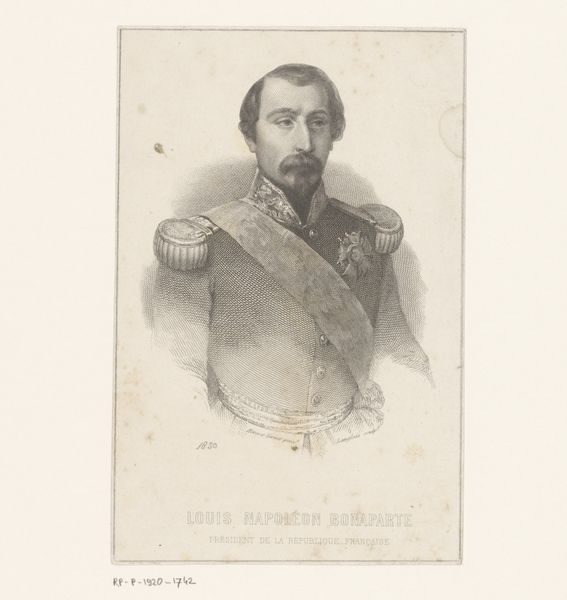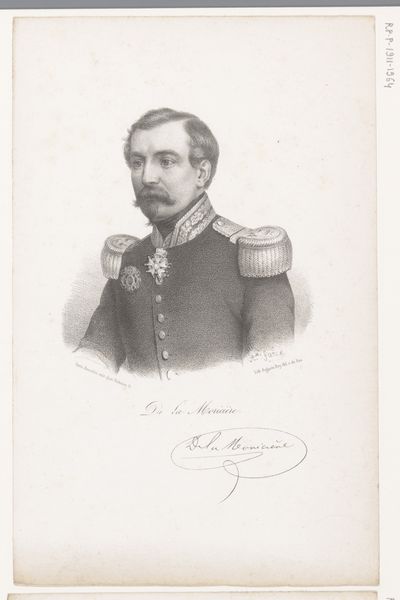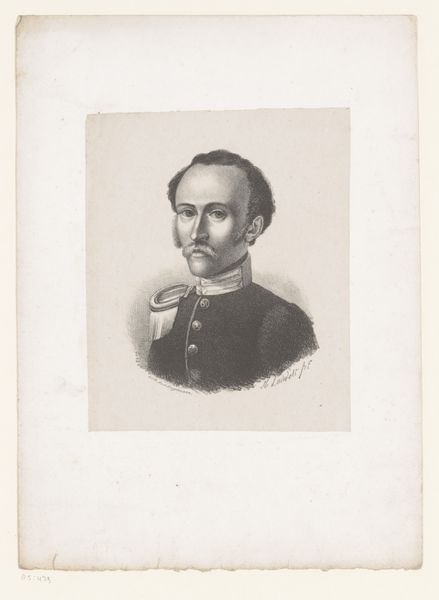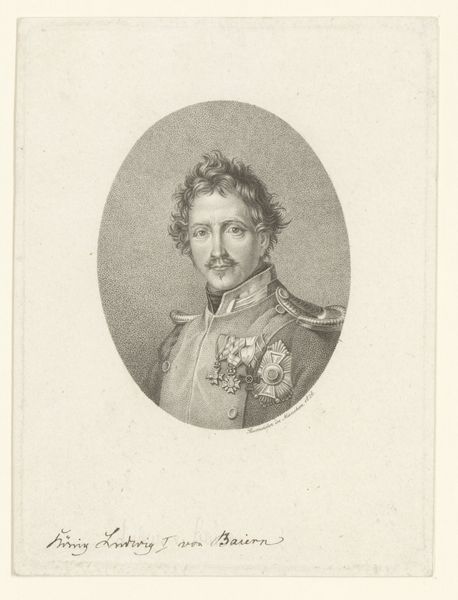
print, engraving
#
portrait
# print
#
pencil drawing
#
portrait drawing
#
history-painting
#
academic-art
#
engraving
#
realism
Dimensions: height 107 mm, width 73 mm
Copyright: Rijks Museum: Open Domain
Curator: So, here we have Carl Mayer’s portrait of Maximilian II, King of Bavaria. This print, dating from sometime between 1848 and 1868, offers a fascinating glimpse into 19th-century European royalty. What strikes you immediately? Editor: His eyes! They’re intense. Almost…sad, maybe? Despite all the regalia, the ornate medal, there’s this deep pensiveness in his expression that I find really captivating. It’s like he’s carrying the weight of the crown… and maybe something else, too. Curator: Indeed. Consider the context: the mid-19th century was a period of great social and political upheaval in Europe. Maximilian, while seen as a more liberal ruler, still had to navigate these turbulent times. Prints like these played a key role in constructing and disseminating the image of the monarchy to the broader public. It’s a carefully crafted performance of power, designed to inspire confidence, even as revolution simmered. Editor: Absolutely. And look at the detail! The cross-hatching technique gives a real texture to the uniform, but it’s also... repetitive, almost mechanical. Does that say something about the man being reduced to his official role? A cog in the state machine? Or am I reading too much into the artist's rendering? Curator: No, I think that’s a very insightful point. The academic art style, while rooted in realism, was also a means of idealization. The artist attempts to depict not just Maximilian as an individual, but Maximilian as the embodiment of the Bavarian state. That controlled, almost manufactured image does speak to the depersonalizing effects of power. Editor: It’s funny. The precision, the commitment to detail almost clashes with the feeling the eyes convey. I see this official portrait, but the king beneath seems trapped by it. The way the artist handled his eyes does draw the viewer in and makes you wonder. Curator: He probably seemed trapped. His reign started around the 1848 revolutions and, despite the liberalism, Bavaria faced significant pressures during the period depicted here. These portraits have very carefully constructed presentations of strength during times of duress. Editor: Fascinating. It makes you consider the price these people pay for sitting on those thrones. The image as performance but underneath lies that hint of real life. Curator: Precisely. It’s in those moments, where the carefully constructed image falters and the human element shines through, that these portraits truly come alive. Editor: Well, I will definitely think differently of the King when walking the gallery next time. Thanks for opening my eyes up to how this all fits together!
Comments
No comments
Be the first to comment and join the conversation on the ultimate creative platform.


